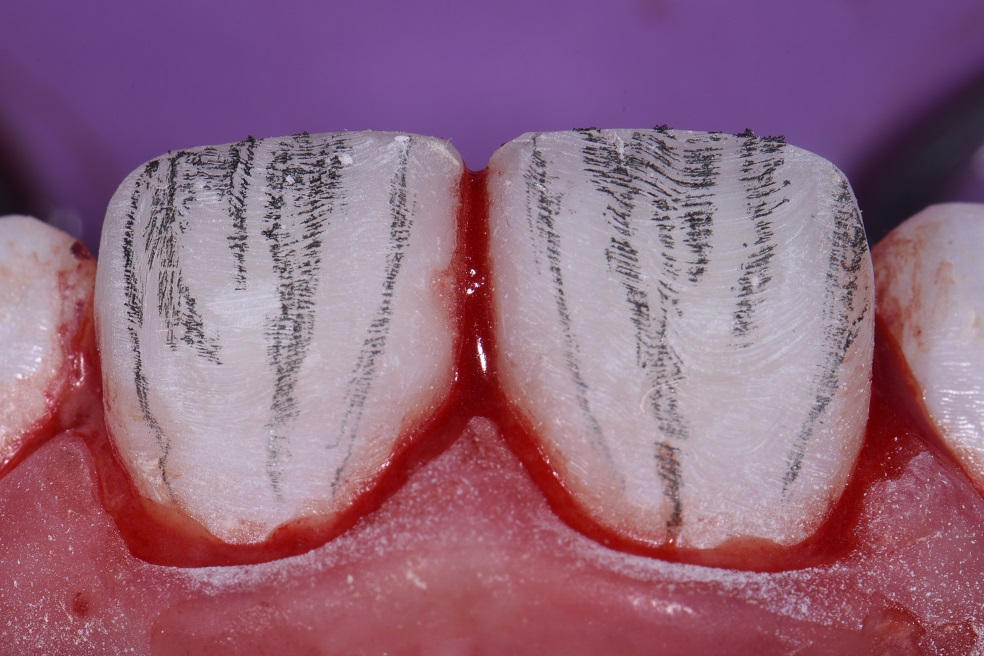Slot Prep Dental
RETENTION FORM:
Step 1: Proximal box preparation For the slot preparation, begin right at the marginal ridge. Do not create any dovetail or extension; simply drill toward the caries in the proximal box. Step 2: Matrix band adaptation Place the composi-tight ring and burnish it to the adjacent tooth in the same way that you would for an amalgam. A preparation's Resistance Form refers to the the shape given to a prepared tooth to enable the restoration and remaining tooth structure to withstand masticatory stress. Here we will look at the effect of oblique forces acting on a crown. The following series of preparation designs represents a progressively invasive operative approach: 1. Box-only (slot) Class II Preparation. A slot preparation resembles the proximal portion of a conventional preparation without any involvement of the central groove98. It is indicated for teeth with a small proximal caries lesion.
Retention form is that form of cavity that best permits the restoration to resist displacement through tipping or lifting forces, especially masticatory loading.
PRINCIPAL MEANS OF GAINING RETENTION:
- Inverted truncated cones or undercuts.
- Dovetail.
- Elastic deformation of dentin e.g. gold foil.
- Friction – which depends on surface area, opposing walls or surfaces involved, parallelism or non-parallelism, proximity of material to walls.
OTHER MEANS:
- Grooves: Mainly indicated in cast restorations, they are prepared in the walls of the proximal box inside the DEJ. The depth is equal to the width. They are placed at the axiobuccal and axiolingual line angles, putting more pressure on the buccal and lingual walls rather than on the axial wall. They are prepared parallel or slightly diverging occlusally for the proper withdrawal of the pattern.
- Internal boxes
- Posts
- Pins: Provide extra retention and can be used with amalgam, composite and cast restorations.
- Triangular areas (gold foil)
- Etching: Provides micromechanical retention by increasing the surface area for retention. This is mainly indicated in bonded restorations.
- Slots: They are prepared in dentin to increase the surface area of the preparation and have more convergent walls. These are 1 – 1.5mm deep box type preparations and can be given 9in occlusal wall or gingival wall or both. Usually they are given all along the width of the occlusal / gingival wall. Each of it has four walls that aids in retention.
- Locks: They are given in proximal box of class II cavity and are indicated mainly for amalgam restorations. They are given in dentin either in the walls of the proximal box or in the occlusal box at the line angles which the pulpal wall of the cavity makes with the occlusal wall. These are 0.2 to 0.3 mm wide and 0.5mm deep into dentin.
- Skirts: Mainly indicated in cast restorations, they are extensions of the proximal box at the line angles of the tooth or even away from it. The margins of the restorations are kept on healthy tooth structure and bevelled. The enveloping of the walls increases the surface area and aids in retention.
Retention techniques in Different Restorative materials:
AMALGAM:
Retention is enhanced by
- Parallel walls and flat pulpal floor or gingival floors
- Occlusal convergence of walls (axial retention) in class of class II.
- Occlusal convergence and dovetail
- Proximal retention in the from of axiofacial and axiolingual locks
- Slots in gingival floor.
CAST GOLD RESTORATIONS
Axial retention in the form of cement locking and friction in micro-irregularities.

This is enhanced by

- Parallelism: A slight divergence of the walls 2 degrees-5 degrees can be given for proper withdrawal of the pattern. In case the available height of the walls is less, the divergence should be kept minimum. At least one half of the walls should be kept parallel and the rest can be diverged.
- Increase in area.
- Occlusal extension is mandatory since it prevents tilting of the restoration.
- Increase instrength of cementing media.
- Sharp line angles except axiopulpal line angle.
- Lateral retention by dovetail and pinholes and pot holes.
Slot Prep Dentistry
TOOTH COLORED RESTORATIONS
Retention is achieved by
- Acid conditioning.
- Retentive cavity preparation.
- Physico-chemical retention.
- Posts.
DIRECT GOLD
Slot Prep Dental
Retention is established by
- Elastic compression developed in dentin because of condensation.
- In classIII-undercut at point angles.
- In class IV-grooves along occlusopulpal and gingivopulpal line angles.